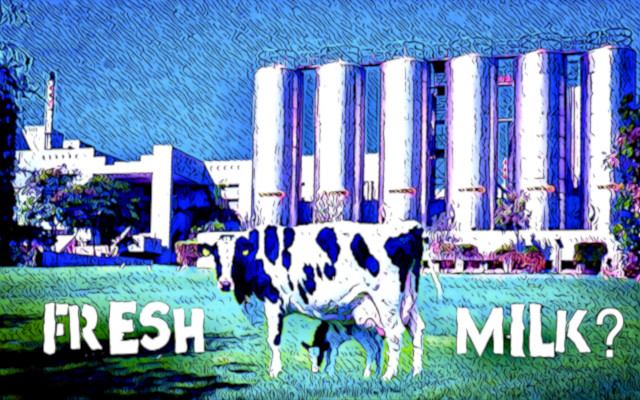Galatines, ‘
milk bars
‘. Following our complaint-and subsequent censure by the Institute for Advertising Self-Discipline (
IAP
)
– The misleading wording ‘
80% milk
‘. However, the new labels do not shine in terms of fairness and transparency of consumer information. Brief notes.
Galatine, an exemplary case of ‘
milk sounding
‘
Great Italian Food Trade (GIFT) reported to IAP. and to the antitrust, in 2017, the deceptive advertising of Galatines carried out by Sperlari (then owned by the Swedish Cloetta, now of the German group Katjes International). In the part where it was falsely claimed the presence of ‘
80% milk
‘, compared with a milk powder content varying, depending on taste, between 33 and 40 percent.
The Institute for Advertising Self-Regulation (IAP), after reviewing the situation, clarified that ‘‘fresh milk’ cannot be considered tout court as an ‘ingredient’ in the candy’ in question. Therefore, we are wary of Sperlari referring to that ingredient as different from the one actually used (milk powder). (1)
Galatine, the fable of ‘fresh milk‘ continues
‘
It takes a flower
‘ – sang Sergio Endrigo in 1974, setting Gianni Rodari to music – ‘to make a table.’ So it takes ‘fresh milk,’ reads the Galatines label in 2018, to make a candy. Between the flower and the table, as between fresh milk and Galatines, however, the path is not so straightforward.
Children’s nursery rhymes are inspired by the imagination and freedom of lyrics. Advertising, on the other hand, is subject to the rules stipulated in ‘Food Information Regulation‘, (2) Consumer Code, Advertising Self-Discipline Code. (3)
Instead, the fairy tale of fresh milk continues. So much for what the IAP has already made clear about the deceptiveness of milk sounding, i.e., the reference to the basic raw material (fresh milk) on the pulverized ingredient, which is derived from an intensive processing process. As unsaid, the new labels boast the following.
‘Making Galatines starts with fresh milk. [?] When the water is removed, a soft powder [?] of milk is obtained, which becomes the basis of our recipe‘.
Supervisory authorities, ICQRF in the first place, should first check whether and to what extent the milk powder used as an ingredient in Galatins stands out from others. A peculiar manufacturing process, or a violation of law? (4)
Fresh milk and milk powder, what differences
Milk powder, it should be clarified once and for all, cannot be compared with fresh milk. Neither nutritionally, (5) nor in any other respect. The differences between the two products are obvious, particularly with regard to their manufacturing process.
[masterslider id=”152″]
Milk powder production consists of the following process steps:
– Receipt and storage of raw milk at +4°C,
– pasteurization, skimming and standardization. Pasteurization is provided at 72°C. Skimming takes place by centrifugal separation of raw cream. During standardization, the required amount of fat is then added (as appropriate, in view of the classification of the milk as skim, semi-skim, or whole),
– evaporation/concentration. The process begins with preheating the milk in several stages (so as not to alter the organoleptic qualities of the product) to a temperature of 90° C. The next stage is concentration. This stage allows the evaporation of the water contained in the milk, up to a concentration value of about 40 percent,
–
spray dry
. At this stage, the product is transformed from the liquid state to the solid state by spraying the liquid milk into the hot drying air. This process is based on the atomization of pasteurized milk, which is sprayed in tiny droplets through thin nozzles into a chamber where a current of hot air causes further evaporation of the water present so that milk powder is produced.
Dario Dongo
Notes
(1) Instead, the Competition and Market Authority (AGCM, so-called Antitrust Authority) merely filed this, like other cases of ‘
milk sounding
‘
(2) See reg. EU 1169/11, Articles 7 and 36 in particular
(3) The Consumer Code, Leg. 206/05, implements dir. 2005/29/EC, currently under review. See the article https://www.greatitalianfoodtrade.it/progresso/pratiche-commerciali-sleali-nuova-direttiva-in-vista
(4) See reg. EU 1169/11, Article 7.1.c
(5) The comparative type nutrition claims under reg. EC 1924/06, Article 9, are indeed only allowed between foods that belong to the same commodity category. Which is identified, as clarified by the European Commission (as well as in the Federalimentare Guidelines, at the time approved by the Ministry of Health), in the sole hypothesis of the identity of raw materials, manufacturing processes and consumption occasions
Dario Dongo, lawyer and journalist, PhD in international food law, founder of WIISE (FARE - GIFT - Food Times) and Égalité.








